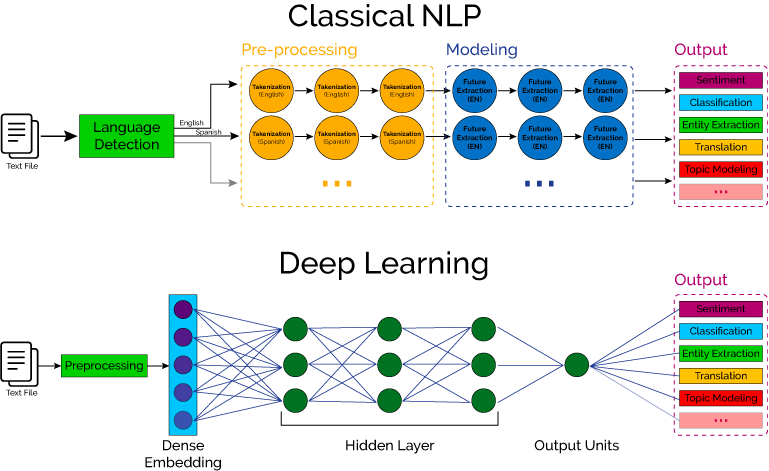

First, systems used handwritten rules based on expert knowledge and could only solve specific, narrowly defined problems. Software for solving language-related tasks was developing as new approaches and techniques for making sense of textual data were introduced.

And from its very beginning, the field of study has focused on tasks like machine translation, question answering, information retrieval, summarization, information extraction, topic modeling and, more recently, sentiment analysis. NLP has a pretty long history, dating back to the 1950’s. It intersects with such disciplines as computational linguistics, information engineering, computer science, and artificial intelligence. Natural language processing focuses on interactions between computers and humans in their natural language. NLP: From Handcrafted Rules to Deep Learning In this article, we’ll give a brief overview of the history of natural language research and discuss three achievements that are widely used in the discipline today. The situation changed several years ago, and now conversational agents like Siri and a large number of chatbots can “understand” our requests and “answer” questions with a high level of quality. Unlike humans, early computers were unable to understand speech or the written word and could only react to a specific set of commands. And this lifelong learning and practice come naturally to us, although not without some effort. We may repeat a similar path when learning a foreign language. First, we master our native language: listen to how family members and other children speak and repeat after them memorize words as they relate to every object and phenomenon learn sentence structure, punctuation, and other rules of written language.
Nlp deep learning how to#
The Evolution of Natural Language Processing (NLP)Īs we grow, we learn how to use language to communicate with people around us.


 0 kommentar(er)
0 kommentar(er)
